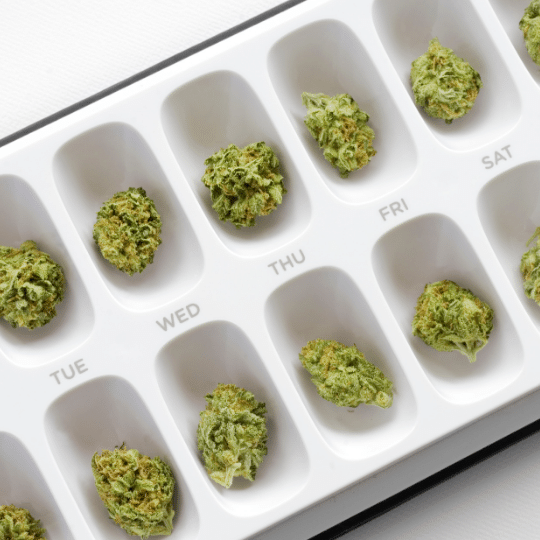
At ACS your Health and Wellness are our priorities. As the New Year unfolds we encourage you to assess your Cannabis use to determine if any changes are needed. Our unique Endocannabinoid Systems along with the unique qualities of Cannabis itself make it important to continually evaluate your current Cannabis dose and it’s effectiveness. It’s possible (and not uncommon) that over time larger amounts of Cannabis are required to induce a therapeutic effect. Ideally, we want you to find the Lowest Effective Therapeutic dose of Cannabis. Read on to learn about some of the unique properties of Cannabis and link to a Sensitization or Recalibrating program.
According to Cannabis Specialist Dustin Sulak, D.O. from Maine, “THC can trigger production of more cannabinoid receptors, increase the sensitivity of existing cannabinoid receptors, and increase the production of the body’s own endocannabinoids, at certain doses. On the other hand, high doses of THC have been shown to have the opposite effect, decreasing the number of available cannabinoid receptors. Brain imaging research has proven that people who develop tolerance to cannabis can rapidly improve their loss of cannabinoid receptor availability under the right circumstances.”
Unique Qualities of Cannabis
Therapeutic Window – The range between Lowest Effective Dose and Dose producing Unwanted/Intolerable Side Effects. People with little/no experience with cannabis typically have a Narrow Therapeutic Window. Regular users develop a Wider Therapeutic Window. This is due to individuals building tolerance to the various effects of cannabis at different rates. Most build tolerance to Unwanted effects FASTER than Desired Effects
Bidirectional Effects – With different strains and dosages Cannabis can produce Opposite (or Bidirectional) effects. Anxious people who take cannabis may relax while non-anxious people who take the same dose can become anxious. The same dose of two different varieties of cannabis can cause opposite effects – one might be an awakening strain and the other might put you to sleep.
Multiphasic Dose – Response Relationship – For most medications, a higher dose will have a Stronger Therapeutic Effect and a higher likelihood of Adverse Effects. A monophasic dose-response relationship. Most Cannabis consumers, gradually Increasing their dose will initially experience Stronger Effects. At a certain point, unique to each person, dose Increases can have Weaker Therapeutic Effect and an Increase in Unwanted Effects. A multiphasic dose-response relationship
CBD and THC combined enhance each others benefits and reduce unwanted effects. Symptoms of Cannabis overdose can be identical to symptoms the correct dosage of Cannabis would relieve; nausea, vomiting, diarrhea, sweating, spasms, tremors, anxiety, panic attacks, paranoia, discoordination, and disturbed sleep. CBD can mitigate many of THC’s unwanted effects so finding the correct concentration of CBD/THC is important to obtaining therapeutic benefit.
MicroDosing Effectiveness – Although some patients can work up to and do well with high doses (100s of milligrams) many patients find that extremely low doses (2.5mg) of THC dominant Cannabis can produce therapeutic effects without causing euphoria or impairment. This Microdosing using a non psychoactive dosage has become an effective and popular way of using Cannabis to improve health.
All said, after taking an inventory of your health and Cannabis use you find you’re interested in making changes, link to Dr. Dustin Sulak’s Sensitization Protocol for more information. “Following this protocol you’ll learn how to take control of your Endocannabinoid system and increase the benefits of cannabis by reversing your tolerance and increasing your sensitivity to cannabis.”
**ACS recommends continued evaluation of your Cannabis needs and is here to serve you with a variety of outstanding products, strains, dosages, accessories, and supportive Patient Care Agents.
